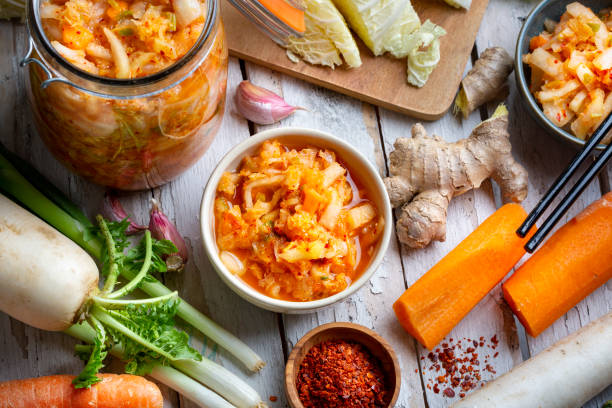Every year, as autumn rolls around, there’s a familiar scent that fills the air and a flavor that dominates everything from coffee to candles: pumpkin spice. This beloved blend of herbs has become synonymous with the fall season, evoking feelings of warmth, comfort, and nostalgia. But what exactly is pumpkin spice, and does it actually contain pumpkin? Let’s delve into the mysteries of this seasonal sensation.
The Origins of Pumpkin Spice
First, let’s take a step back and explore the origins of pumpkin spice. While it might seem like a modern invention concocted by marketing wizards, pumpkin spice has a long and storied history rooted in traditional autumnal flavors.
The term “pumpkin spice” refers to a blend of spices commonly used in pumpkin pie, a classic American dessert dating back to the colonial era. These spices typically include cinnamon, nutmeg, ginger, cloves, and sometimes allspice. Individually, these spices have been cherished for centuries for their aromatic qualities and culinary versatility. However, when combined in just the right proportions, they create a symphony of flavors that perfectly complement the mild sweetness of pumpkin.
What’s in Pumpkin Spice?
As mentioned earlier, the primary components of pumpkin spice are cinnamon, nutmeg, ginger, cloves, and sometimes allspice. Let’s break down each ingredient:
- Cinnamon: This warm, aromatic spice is derived from the inner bark of several tree species belonging to the genus Cinnamomum. Cinnamon adds a sweet and woody flavor to pumpkin spice, along with a hint of warmth that is quintessentially autumnal.
- Nutmeg: Nutmeg is the seed of the nutmeg tree, native to the Spice Islands of Indonesia. It has a slightly sweet and nutty flavor with warm undertones, making it a perfect complement to cinnamon in pumpkin spice blends.
- Ginger: Ginger root, with its spicy and intense flavor, adds a zesty kick to pumpkin spice. It provides a subtle heat and depth of flavor that balances the sweetness of the other spices.
- Cloves: Cloves are the aromatic flower buds of the clove tree, native to Indonesia. They have a strong, pungent flavor with a hint of sweetness and a warm, woody aroma. Cloves contribute a rich and complex flavor to pumpkin spice, enhancing its overall depth.
- Allspice (optional): Despite its name, allspice is not a blend of spices but rather a single spice derived from the dried berries of the Pimenta dioica tree, native to Central America. It resembles a combination of cinnamon, nutmeg, and cloves, hence its name. Allspice can be included in pumpkin spice blends to add an extra layer of complexity and flavor.
Does Pumpkin Spice Contain Pumpkin?
Now, onto the million-dollar question: does pumpkin spice actually contain pumpkin? Despite its name, traditional pumpkin spice blends do not typically have any pumpkin. Instead, they derive their name from their association with pumpkin-flavored treats, particularly pumpkin pie.
However, in recent years, the popularity of pumpkin spice-flavored products has led to the creation of pumpkin spice blends that incorporate dried pumpkin or pumpkin flavoring. These variations aim to capture the essence of pumpkin pie in a convenient spice blend, making it easier to infuse the beloved flavor into a variety of foods and beverages.
It’s essential to read the ingredients list carefully when purchasing pumpkin spice products to determine whether they contain actual pumpkins or are simply a blend of spices. Additionally, homemade pumpkin spice blends offer the flexibility to adjust the ratios of individual spices to suit personal taste preferences.
The Versatility of Pumpkin Spice
One of the reasons for pumpkin spice’s enduring popularity is its incredible versatility. While it’s most commonly associated with pumpkin-flavored treats such as lattes, muffins, and cookies, pumpkin spice can enhance a wide range of dishes, both sweet and savory.
In addition to baked goods, pumpkin spice can be used to flavor oatmeal, yogurt, pancakes, and even savory dishes like roasted vegetables or soups. Its warm and aromatic profile pairs well with ingredients like maple syrup, honey, apples, and pecans, further expanding its culinary possibilities.
Beyond the kitchen, pumpkin spice has found its way into an array of products, including candles, air fresheners, body lotions, and even cocktails. Its comforting aroma and nostalgic appeal evoke memories of crisp autumn days and cozy evenings spent by the fire.
The Cultural Phenomenon of Pumpkin Spice
The rise of pumpkin spice as a cultural phenomenon cannot be understated. What began as a simple blend of spices used in homemade pumpkin pie has evolved into a multi-billion-dollar industry encompassing everything from seasonal marketing campaigns to social media hashtags.
Each year, the arrival of pumpkin spice season is eagerly anticipated by consumers and businesses alike, prompting a flurry of product launches and promotional efforts. Brands compete to offer the most innovative and indulgent pumpkin spice creations, driving demand and fueling the enthusiasm surrounding this beloved flavor trend.
Conclusion
Pumpkin spice may not contain pumpkin in its traditional form. Still, its blend of cinnamon, nutmeg, ginger, cloves, and sometimes allspice captures the essence of autumn in a single aromatic mixture. Whether enjoyed in a steaming cup of coffee, a freshly baked pie, or a scented candle, pumpkin spice has become synonymous with the sights, smells, and flavors of fall.
So, the next time you sip a pumpkin spice latte or savor a slice of pumpkin bread, take a moment to appreciate the centuries-old tradition and the seasonal joy encapsulated in every spice-laden bite. After all, pumpkin spice isn’t just a flavor—it’s a celebration of the changing seasons and the simple pleasures of life.

